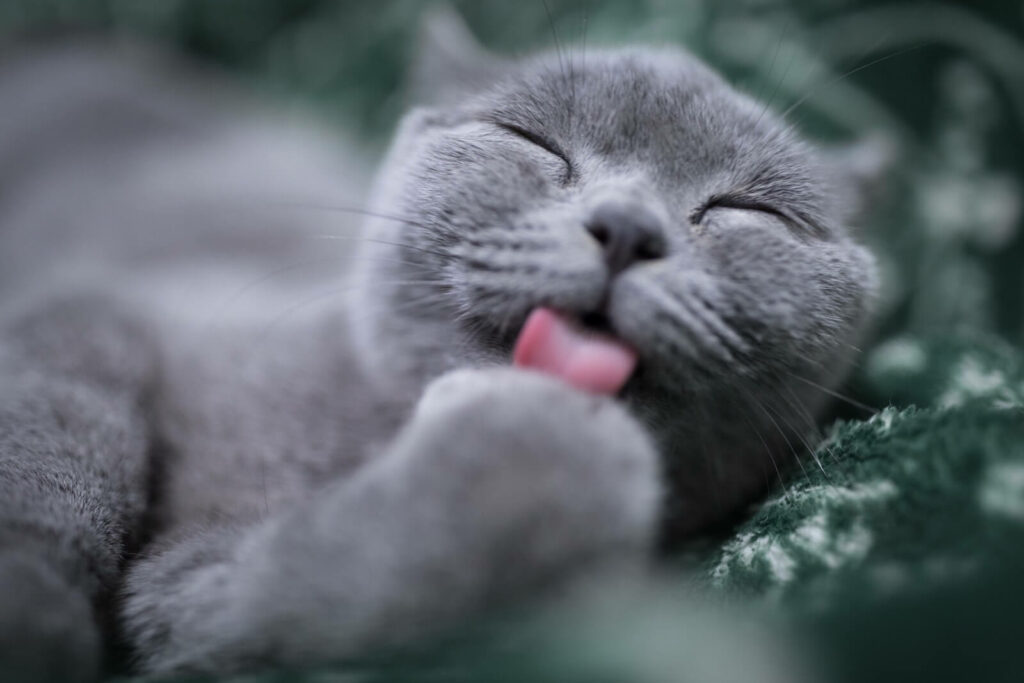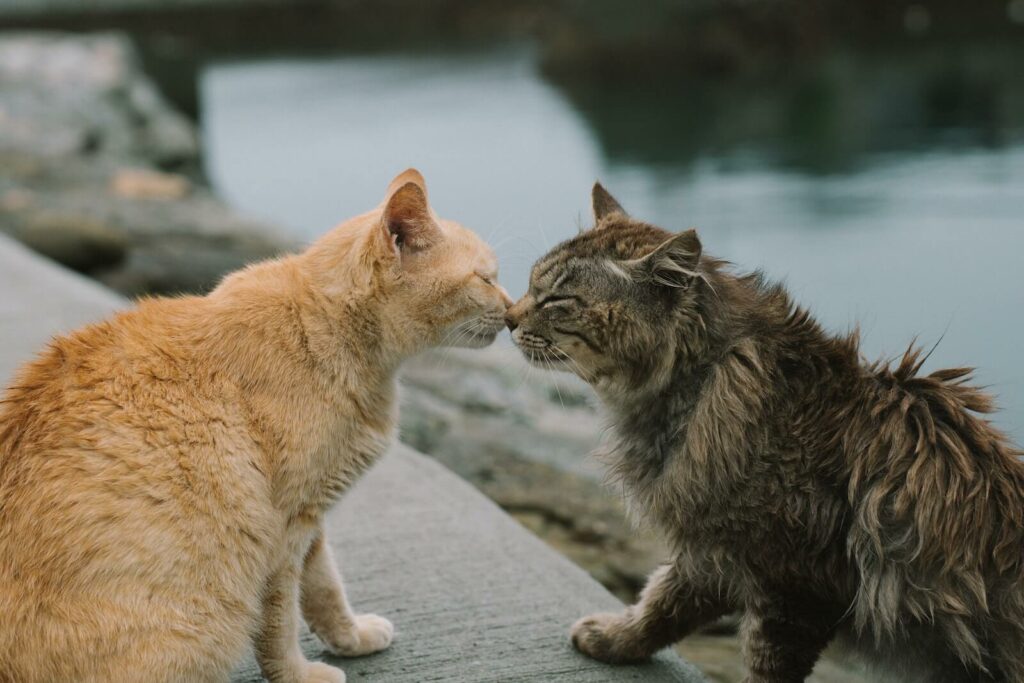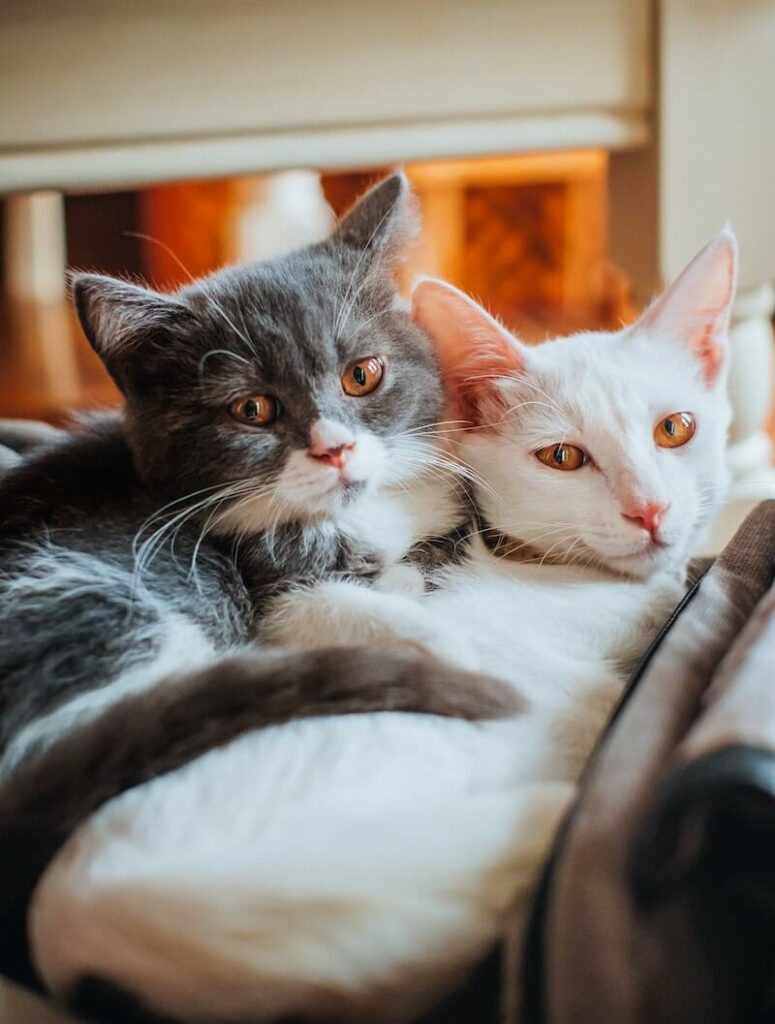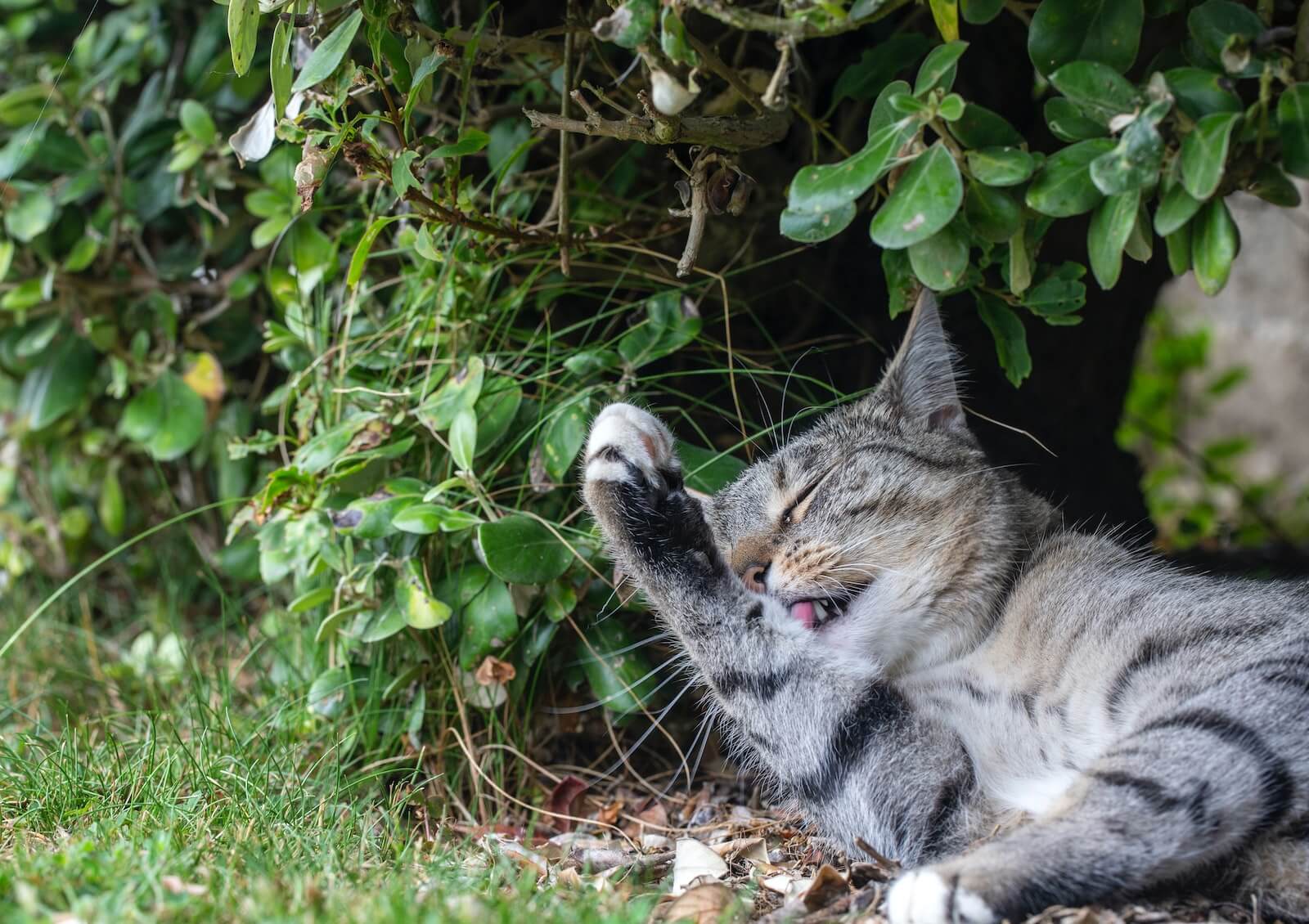Cats have unique ways of communicating with each other, and some are confused because they can represent so many different meanings. Part of being a responsible pet parent is understanding at least our cat’s everyday gestures and activities. This way, we will understand a little more of their behavior and be able to take better care of them. And if we talk about everyday cat behaviors, I am sure that one of the first things that come to mind is grooming. Have you ever asked yourself, “why do cats groom each other?“
Everyone living with a cat has seen them grooming themselves, even for hours, but what happens when they transfer this behavior to other animals? Is it normal? If you’ve ever wondered, “why do cats lick each other?” you’ve come to the right place.
Why do cats groom themselves?
The number one reason is that they keep themselves clean and well groomed. Cats are little cleanliness freaks who don’t tolerate dirt and bad odors on themselves and those in their immediate circle. When they lick themselves, they stimulate the production of sebum, i.e., their natural oils, and thus ensure that they maintain healthy skin and coat. They spread these oils all over their body with their tongue, resulting in a clean, protected, and gleaming coat.

Cats can spend more than half their day in multiple grooming sessions, ensuring a coat free of knots, dead hair, fleas, and parasites. But other reasons lead a cat to lick itself, for example, to calm down in a stressful situation.
Why do cats groom each other? What does it mean when cats lick each other?
Grooming is an important activity among cats, which they only share with those members of their group, be it other cats, dogs, or even their human family. When one cat grooms another, it is called allogrooming, and it is not an activity they do with just anyone. There must be a bond of trust. In other words, they only groom their friends. But why?
To create a social bond
When cats are babies, they learn the fantastic, age-old technique of grooming as their mothers begin cleaning them from birth. First, the mother cleans the kittens to eliminate any odors that might attract predators and then continues to do so regularly to keep her little ones clean. At this stage, they learn to groom themselves, licking their fur and taking small bites to remove tiny bits of debris tangled in their hair.
These bites are known as love bites. Sometimes cats affectionately give light bites, just as their mother did with them.

Even if the motive is to clean, spending time together during the cleaning session establishes bonds, which the kittens will later repeat with their littermates, and then with their new human families. If you ask any cat owner, they are sure to tell you that their cat has cleaned for them on more than one occasion.
To clean hard-to-reach places
Although cats are very territorial and jealous, they sometimes resort to helping each other while keeping calm and clean. Have you ever seen a cat bend like a pretzel? It seems they can reach even the farthest corner of their body, but that’s not the case. No matter how flexible they are, the poor things can’t reach behind their neck and head to groom themselves, and that’s why they have to resort to asking other cats for help.
If you watch closely, you may notice that sometimes a cat will approach another cat and tilt its head, leaving the neck exposed. This behavior is a way of asking the other cat to help it finish its grooming session.
To demonstrate dominance
Another reason is nothing more and nothing less than to establish social positions and to mark the dominance of the high-ranking cats. Just as the mother does with the cubs, she does the grooming and not the other way around, so it is when the alpha grooms the other pack members. Experts have found that the high-ranking cat or cats use this resource to remind others of their dominant role. This cat stands upright to groom his clan, while the one who receives the bath maintains a submissive posture.

Another hypothesis is that cats tend to groom the cat they have problems with to avoid a confrontation that could hurt both. Instead of physically attacking the other, the dominant cat grooms him, making it clear who’s in charge.
Why do cats groom each other? Conclusions
Have you noticed that your cat prefers to be petted on the neck, behind the ears, or the head? Well, it’s just because of allogrooming, because they are used to having another cat touching them in those areas. No doubt cats are brilliant, and allogrooming proves it once again. Whether to help each other or to avoid further conflict, allogrooming is a fascinating cat communication tool.
Now that you know a little more about this feline behavior, you’ll know why the next time you see your kitty grooming its friend. If you have more than one cat at home, don’t be surprised if you see them grooming each other, it’s just their way of saying they love each other.
Have you ever seen your cat grooming another cat? Tell us about it in the comments!
